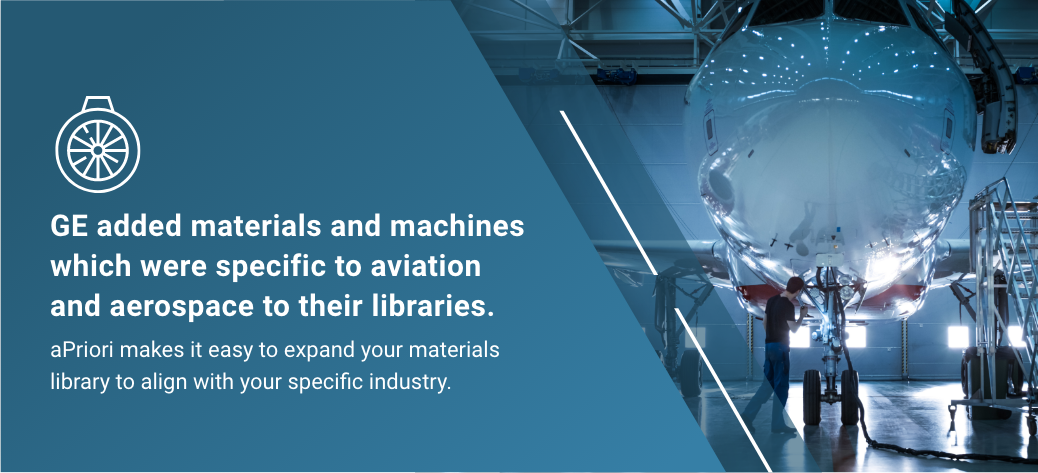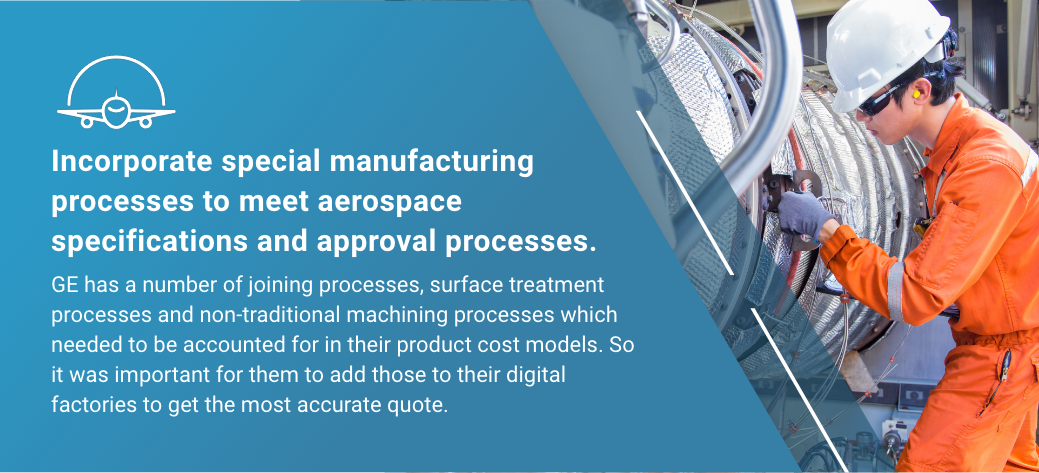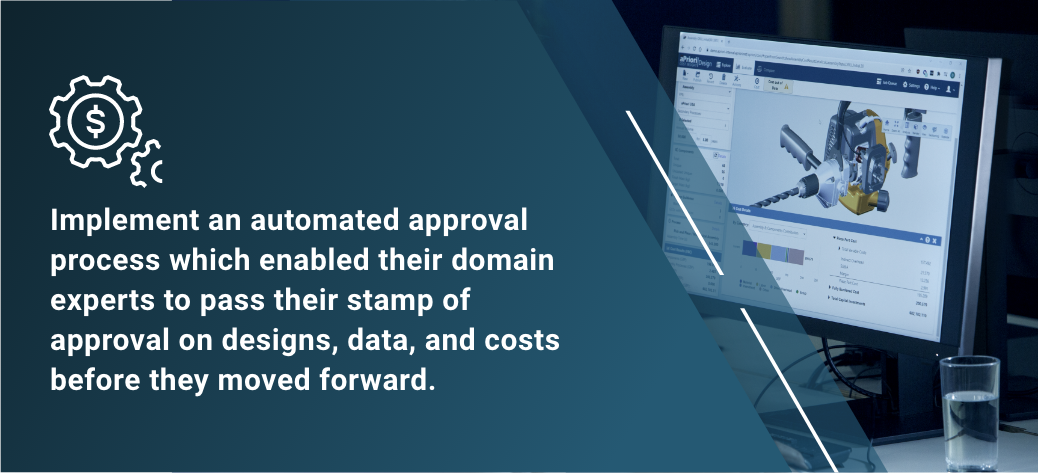Case Study
Product Cost Management Systems in Action
Introduction
GE Aerospace set a company-wide vision to advance state-of-the-art product cost management technologies. One key area of focus was making data available to its team of engineers so that they could act on information and drive the right business outcomes.
aPriori enables GE to build and maintain a solid product cost management framework.

Company Details
Industry
Aerospace & Defense
Number of Employees
48,000
Revenue
$10.2 Billion
Website
aPriori Product
aP Pro
The Problem
GE Aerospace wanted to build a business culture where everyone was focused on product cost and had the tools to be able to do soThe Solution
Leverage aPriori to build product cost models for more than half of GE's products to automate product costingBuilding a Solid Product Cost Management Framework
GE Aerospace faced many challenges regarding cost data. Historically, access to cost data has been restricted. It was available, but it was hidden among disparate and discrete systems. So, a single user had to pull various reports from several systems of record and then sort through the bits and pieces for the right information.
Consolidating and streamlining cost data was a key area of focus for GE’s product cost management strategy.
The first step was to create a data lake, which brought all the disparate information together and made it accessible to the entire team. They then looked at how to stitch the data together and publish datasets to make it usable in the lake. Of course, a data lake is only as quality as the data sources that feed it. So, data cleanup and sourcing were another critical element of their process.
GE Aerospace needed access to the right cost estimation tools as it progressed through the different phases of the product life cycle. It also required the right tools and methodology to analyze the data and prioritize it.
Together with aPriori, the manufacturer developed a strategy that could be adopted enterprise-wide. Scaling was critical to its product cost management initiatives.
Like many large businesses, one of GE Aerospace’s biggest challenges was departmental and organizational silos. There were a number of connected handoffs and interdependencies, which cost valuable time and money.
How GE Aerospace Set Its Product Cost Management Initiatives
Setting the enterprise vision for GE Aerospace involved three core facets.
GE Aerospace Uses aPriori to Drive Physics Based Should Cost Models Across the Business
GE Aerospace also does extensive variability analysis with aPriori, which is particularly important when comparing the cost of similar parts based on design intent, parameters, or manufacturing processes. Importantly, the company needed to compare costs across different product lines to identify the best product cost-saving opportunities.
aPriori also enables GE Aerospace to run cost analyses for its older product lines.
Breaking Silos That Prevent Product Cost Management
The first step to breaking silos is to define the framework of your product cost data access and ownership. Identify:
- Who is the owner of cost? This is a critical question to ask, as many times, departments believe cost is owned by every department but their own. Creating a culture of cost means refocusing ownership so that everyone becomes the owner of cost.
- Which data sources shall I trust? When data comes from disparate sources and systems, efforts need to be made to create a single source of truth from which to draw the most accurate cost models from
- Who can see the data and access it? Access is important for compliance and streamlines communications and collaboration across teams.
In order to break department silos, GE Aerospace created a culture around product cost management which included representatives from design engineering, commodity buyers, manufacturing engineers, and cost analysts in order to develop:
- Shared goals across each division and department
- Data analytics to drive insights for execution
- Cross-functional domain expertise
- A continuous cycle of “learn, do, learn”
How to Amplify Your Product Cost Management Capabilities
Once your framework is set, it’s time to expand – which is exactly what GE Aerospace did.
When the company started its journey, only about one-quarter of its parts were able to effectively show cost using aPriori.
By adding key components, the company expanded its product cost initiatives to other facets of the business.
First, the manufacturer added materials and machines specific to aviation and aerospace to its libraries. aPriori makes it easy to expand materials libraries to align with specific industries.
GE Aerospace also needed to add larger machines to solve for certain components that measure several feet in diameter.
Next, the company was able to incorporate special manufacturing processes to meet aerospace specifications and approval processes. GE has a number of joining processes, surface treatment processes, and non-traditional machining processes that need to be accounted for in its product cost models. So, it was important for the organization to add those to its digital factories to get the most accurate quote.
In addition, GE Aerospace needed to implement an automated approval process that enabled its domain experts to pass their stamp of approval on designs, data, and costs before they moved forward.
Of course, security was a big concern for GE Aerospace. Given its global user base, it was critical to ensure the complete security of its defense and commercial programs. Export control, sharing control, and data access were important elements of GE’s security protocols.
With these changes, GE Aerospace can automate the product costing of more than half of its parts using aPriori.
How aPriori Benefits GE Aerospace's Business Goals
Since implementing aPriori, GE Aerospace has transformed its business into one that is streamlined, engaged, and focused on product cost at every stage of the product’s lifecycle.
Experience aPriori in Action
Meet with an aPriori expert and learn how we can help you to eliminate product costs, improve productivity, and reduce your carbon footprint.











